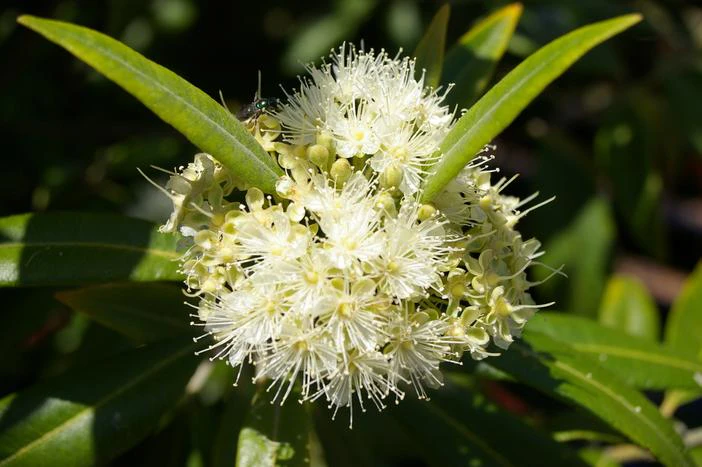Lemon Myrtle
(Backhousia citriodora)
Lemon Myrtle (Backhousia citriodora)
/
/

John Robert McPherson
CC BY-SA 4.0
Image By:
John Robert McPherson
Recorded By:
Copyright:
CC BY-SA 4.0
Copyright Notice:
Photo by: John Robert McPherson | License Type: CC BY-SA 4.0 | License URL: https://creativecommons.org/licenses/by-sa/4.0 | Uploader: John Robert McPherson | Publisher: Wikipedia Commons
































Estimated Native Range
Climate Requirements for West Allis, Wisconsin
| This Plant | Your Site | Plant Suitability for Your Location | ||
|---|---|---|---|---|
| • Precipitation | 30" - 204" | 33" | Your precipitation may be insufficient for this plant. Irrigate N" / year. | Irrigate N" / year |
| • High Temp. | 72°F - 91°F | 82°F | Your summer temperatures are normal for this plant. | Excellent |
| • Low Temp. | 36°F - 61°F | 11°F | Your winter temperatures may be too cold for this plant | Too cold |
This plant should grow well at your location with about N inches per year (Y minutes per month) of irrigation.
Summary
Backhousia citriodora, commonly known as Lemon Myrtle, is an evergreen shrub or small tree native to the subtropical rainforests of central and southeastern Queensland, Australia. It typically grows to 6 meters (19+1⁄2 feet) in height but can be smaller in cultivation. The plant features a dense canopy with lance-shaped, glossy green leaves that emit a strong lemon scent when crushed. Lemon Myrtle blooms with clusters of creamy-white flowers, each 5–7 mm (3⁄16–1⁄4 inch) in diameter, from summer to autumn, which are not particularly showy but contribute to the plant’s ornamental value.
Lemon Myrtle is valued for its fragrant leaves, which are used to produce essential oils and as a culinary herb. It is also appreciated for its attractive foliage and as a source of nectar for bees. In gardens, it is used for screening, as a feature plant, or in containers. Lemon Myrtle prefers well-drained soils, tolerates a range of soil types except the poorest drained, and requires ample water, especially in dry periods. It thrives in full sun to part shade and benefits from slow-release fertilizers. While generally hardy, it can be susceptible to myrtle rust, a fungal disease. It is also sensitive to frost, especially when young, and should be protected in cooler climates.CC BY-SA 4.0
Lemon Myrtle is valued for its fragrant leaves, which are used to produce essential oils and as a culinary herb. It is also appreciated for its attractive foliage and as a source of nectar for bees. In gardens, it is used for screening, as a feature plant, or in containers. Lemon Myrtle prefers well-drained soils, tolerates a range of soil types except the poorest drained, and requires ample water, especially in dry periods. It thrives in full sun to part shade and benefits from slow-release fertilizers. While generally hardy, it can be susceptible to myrtle rust, a fungal disease. It is also sensitive to frost, especially when young, and should be protected in cooler climates.CC BY-SA 4.0
Plant Description
- Plant Type: Shrub, Tree
- Height: 6-21 feet
- Width: 3-10 feet
- Growth Rate: Slow
- Flower Color: White
- Flowering Season: Summer
- Leaf Retention: Evergreen
Growth Requirements
- Sun: Full Sun, Part Shade
- Water: Low
- Drainage: Medium
Common Uses
Bee Garden, Bird Garden, Butterfly Garden, Edible*Disclaimer: Easyscape's listed plant edibility is for informational use. Always verify the safety and proper identification of any plant before consumption., Fragrant, Low Maintenance, Potted Plant, Showy Flowers, Street Planting
Natural Habitat
Subtropical rainforests of central and southeastern Queensland, Australia
Other Names
Common Names: Lemon Ironwood, Lemon Scented Myrtle, Lemon Scented Ironwood
Scientific Names: Backhousia citriodora
GBIF Accepted Name: Backhousia citriodora F.Muell.